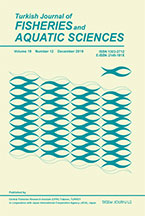Horticultural Studies (HortiS)
2023, Vol 40, Num, 3 (Pages: 086-097)
Micropropagation of Lisianthus [Eustoma grandiflorum (Raf.) Shinn.] Leaf Explants and Single Nodes in Response to Plant Growth Regulators
2 Has Biotech Company, Antalya, Türkiye
3 Aegean Agricultural Research Institute, 35660, İzmir, Türkiye
4 Ankara University Technopolis Doqutech Academy Company, Ankara, Türkiye DOI : 10.16882/HortiS.1363441 Viewed : 1658 - Downloaded : 724 Lisianthus has long-lasting, white, blue-purple, velvet or pink flowers. Varieties that can be used in pots, outdoors, or cut flowers are widely used and it is essential to develop new varieties to increase their commercial value. Breeding studies with classical methods can take a long time in lisianthus. Techniques to create variation in these plants and facilitate their reproduction always contribute to shortening the breeding period and one of the best known of these methods is plant tissue culture. This study aimed to investigate the micropropagation possibilities in lisianthus and examine the effects of auxin and cytokinin applications and doses on shoot reproduction. Supplemented with 10 different plant growth regulators in Murashige and Skoog (MS) medium, leaf explants from lisianthus plants that were germinated under in vitro conditions (seedlings) were cultivated. 6-benzyl aminopurine (BAP) was utilized in 5 doses (0.5, 1.0, 2.0, 3.0, and 4.0 mg L-1) alone in the first 5 groups. Naphthalene acetic acid (NAA) was also added to the BAP mediums at a concentration of 0.5 mg L-1. Shoot formation, shoot lengths, the number of shoots longer and shorter than 1 cm, and regeneration of new shoots after subcultures were determined. According to the results, MS mediums containing 3.0 and 4.0 mg L-1 BAP could be good starting mediums for regenerating new lisianthus shoots from leaf explants. These treatments got the highest values both in shoot formation and the number of shoots longer than 1 cm. It has been determined that 3.0 mg L-1 BAP alone can be used for both organogenesis from leaf explants and shoot proliferation in single node culture. In vitro shoots of the lisianthus species were easily rooted and both PGR-free MS or ½ MS mediums. Lisianthus shoots propagated under in vitro conditions can be rooted under ex vitro conditions both in the float hydroculture and in the soil mixture. The acclimatization stage was optimized also successfully. Keywords : 6-benzyl aminopurine Ex vitro rooting In vitro propagation Lisianthus Naphthalene acetic acid














